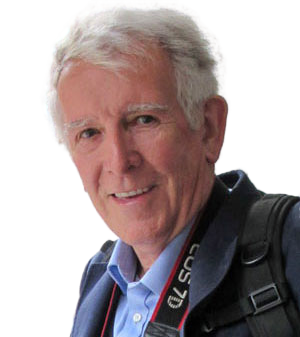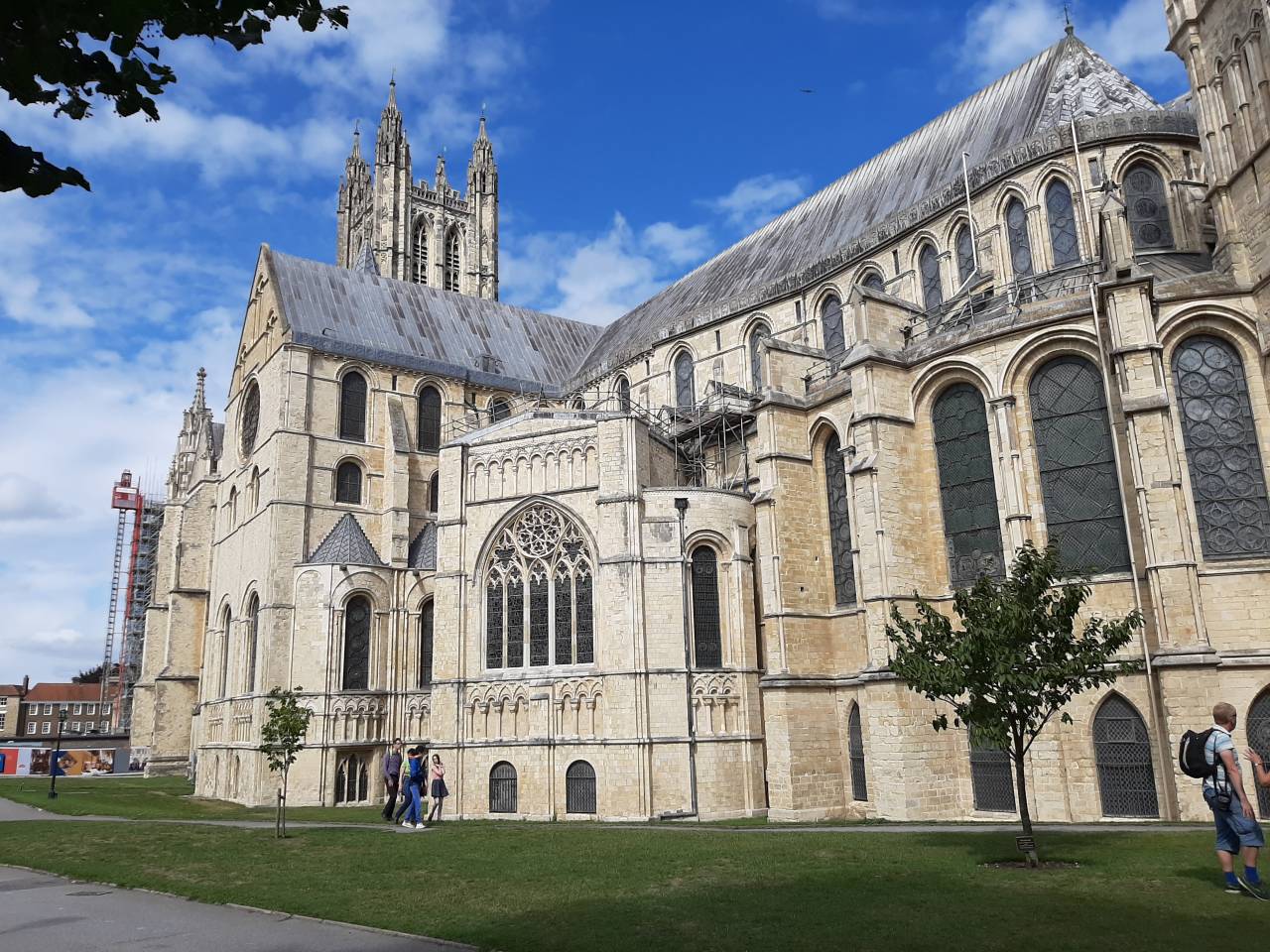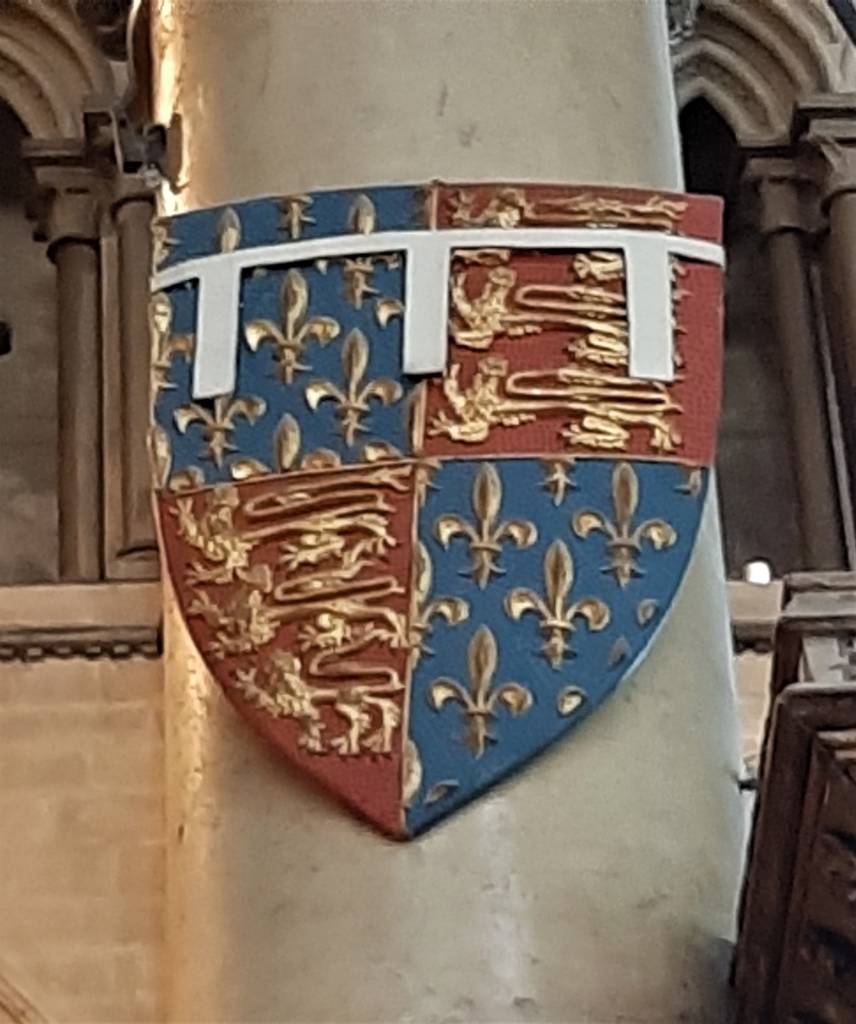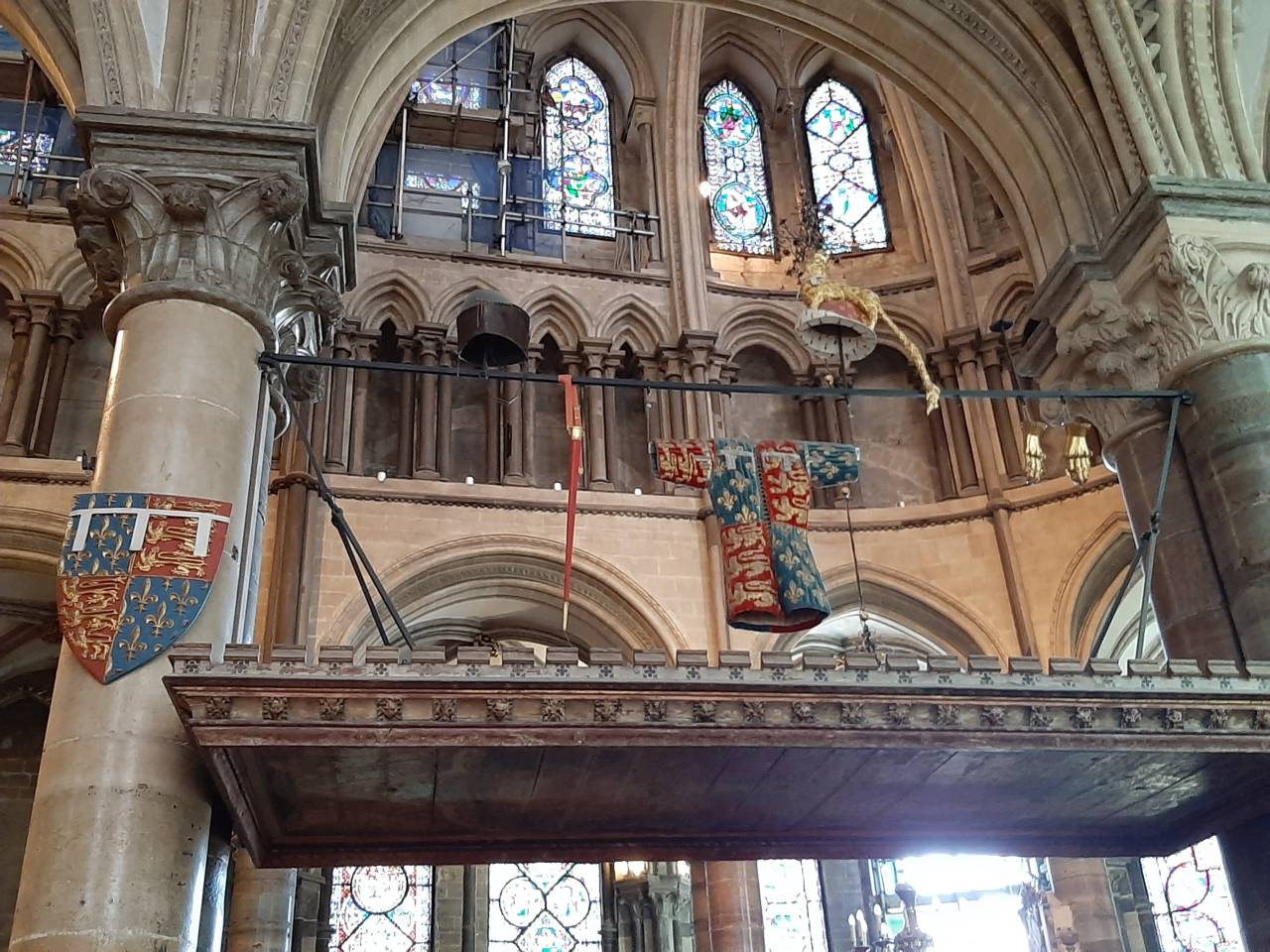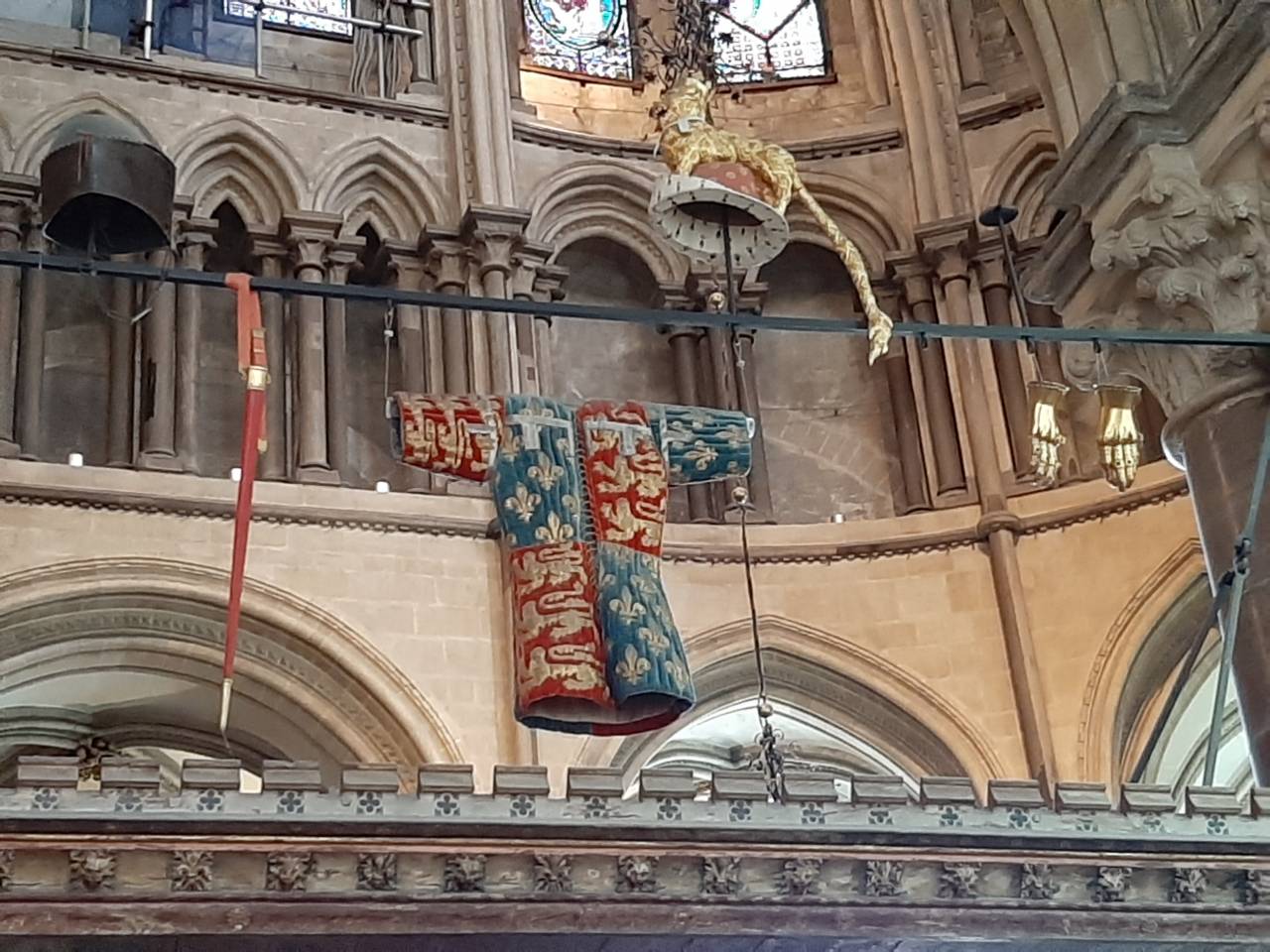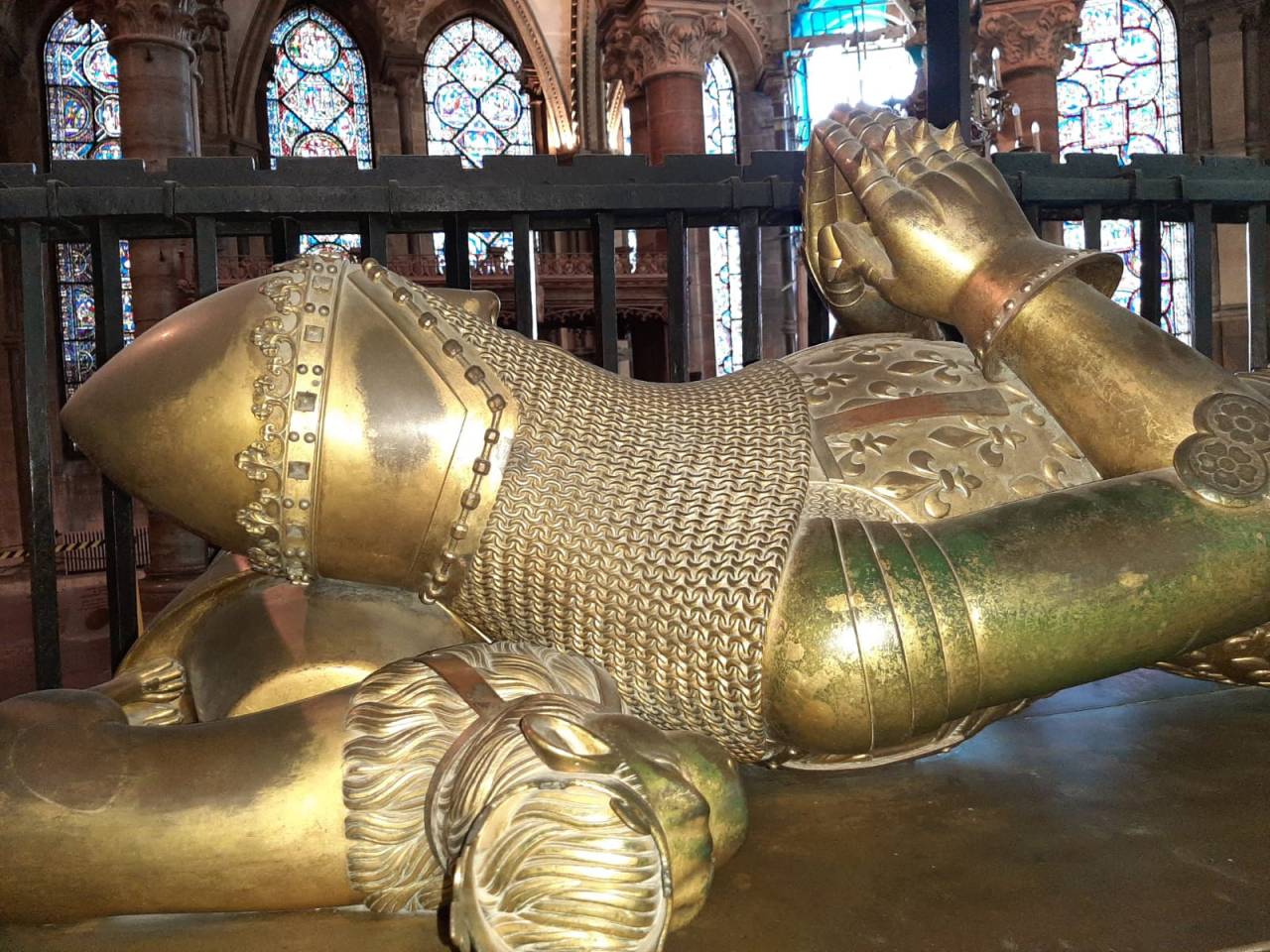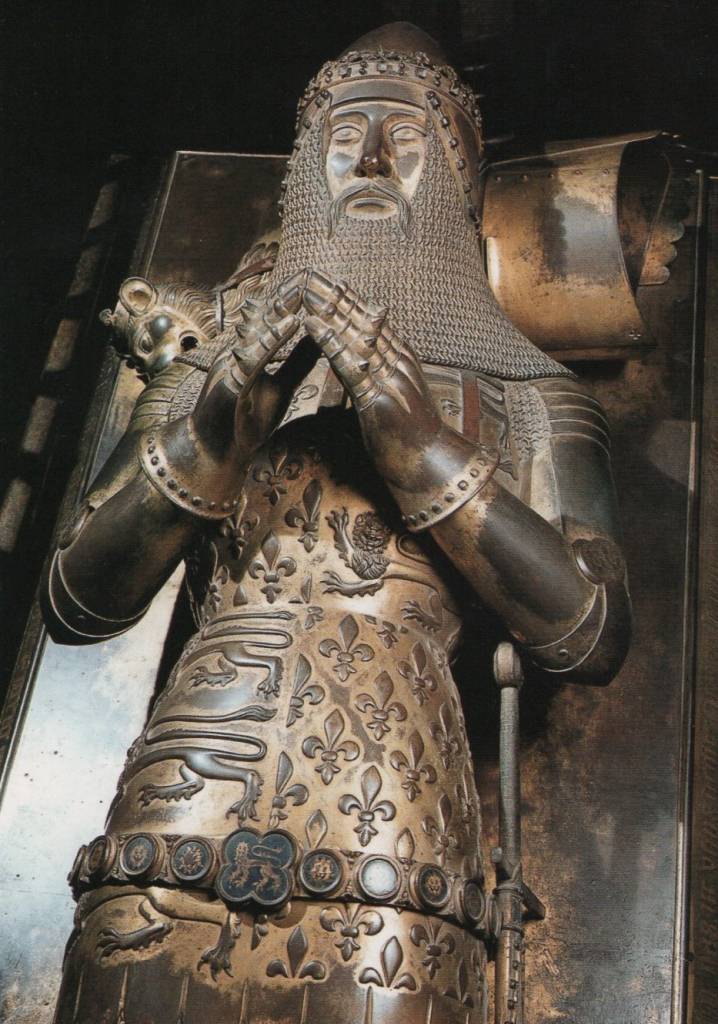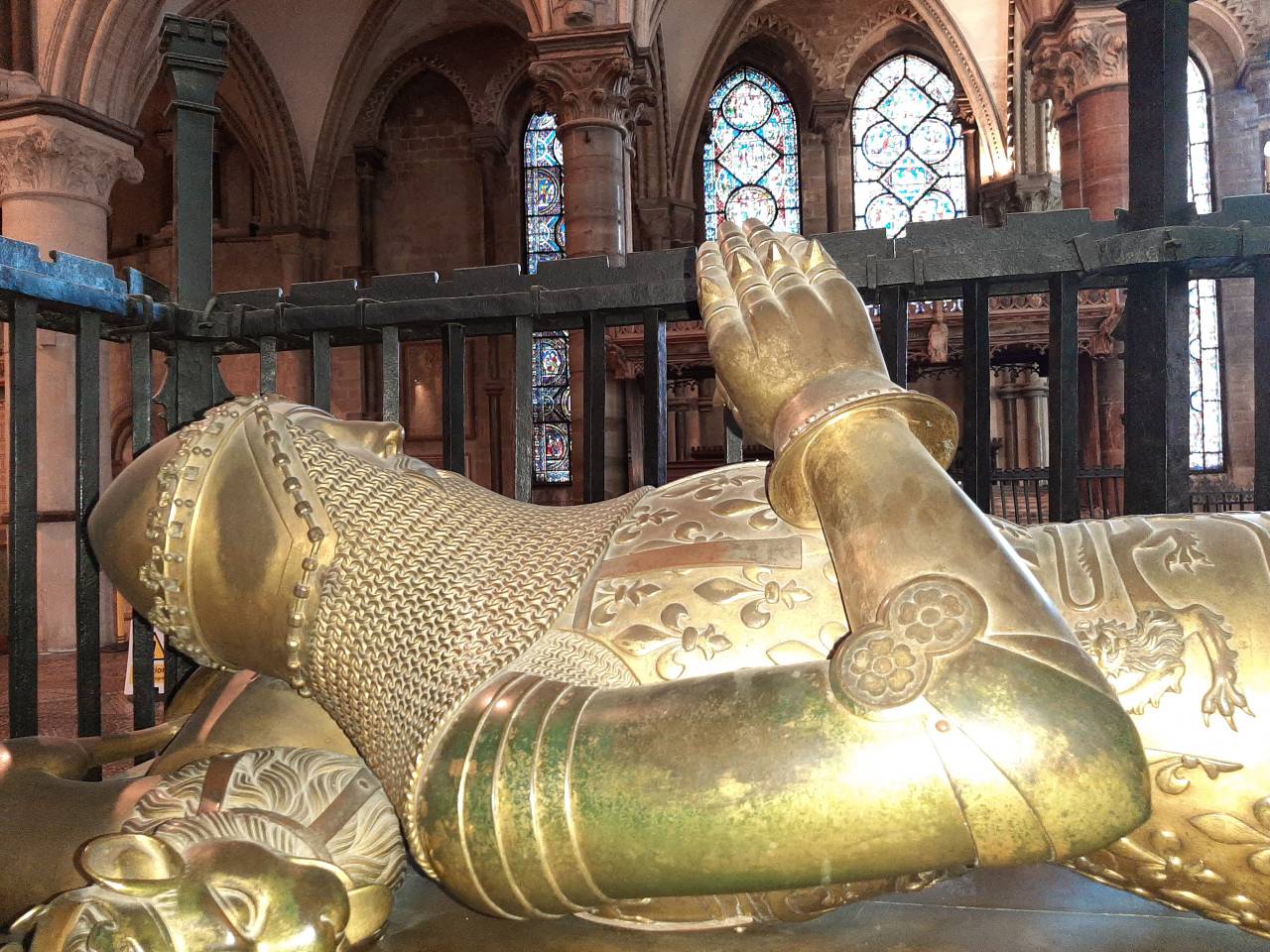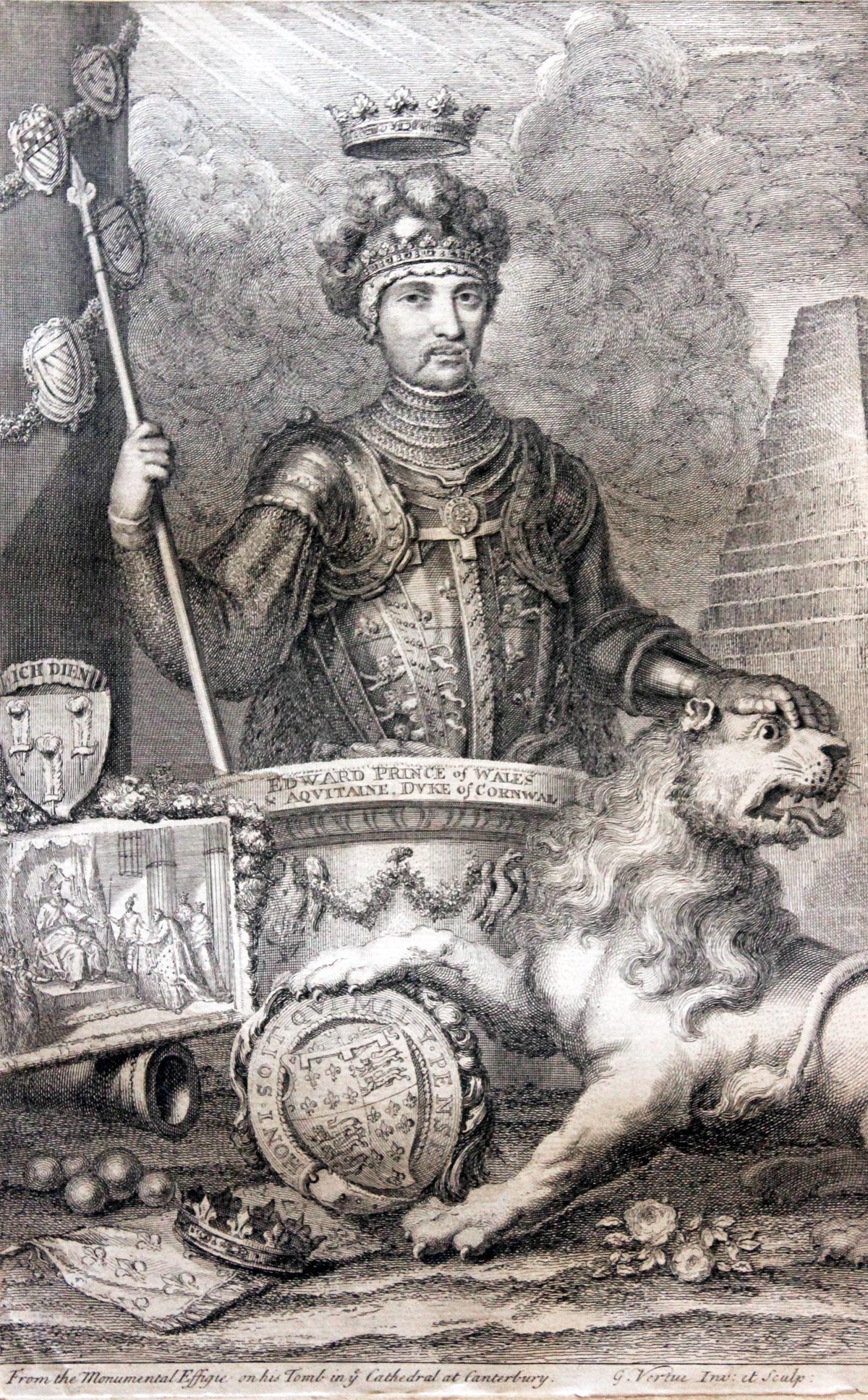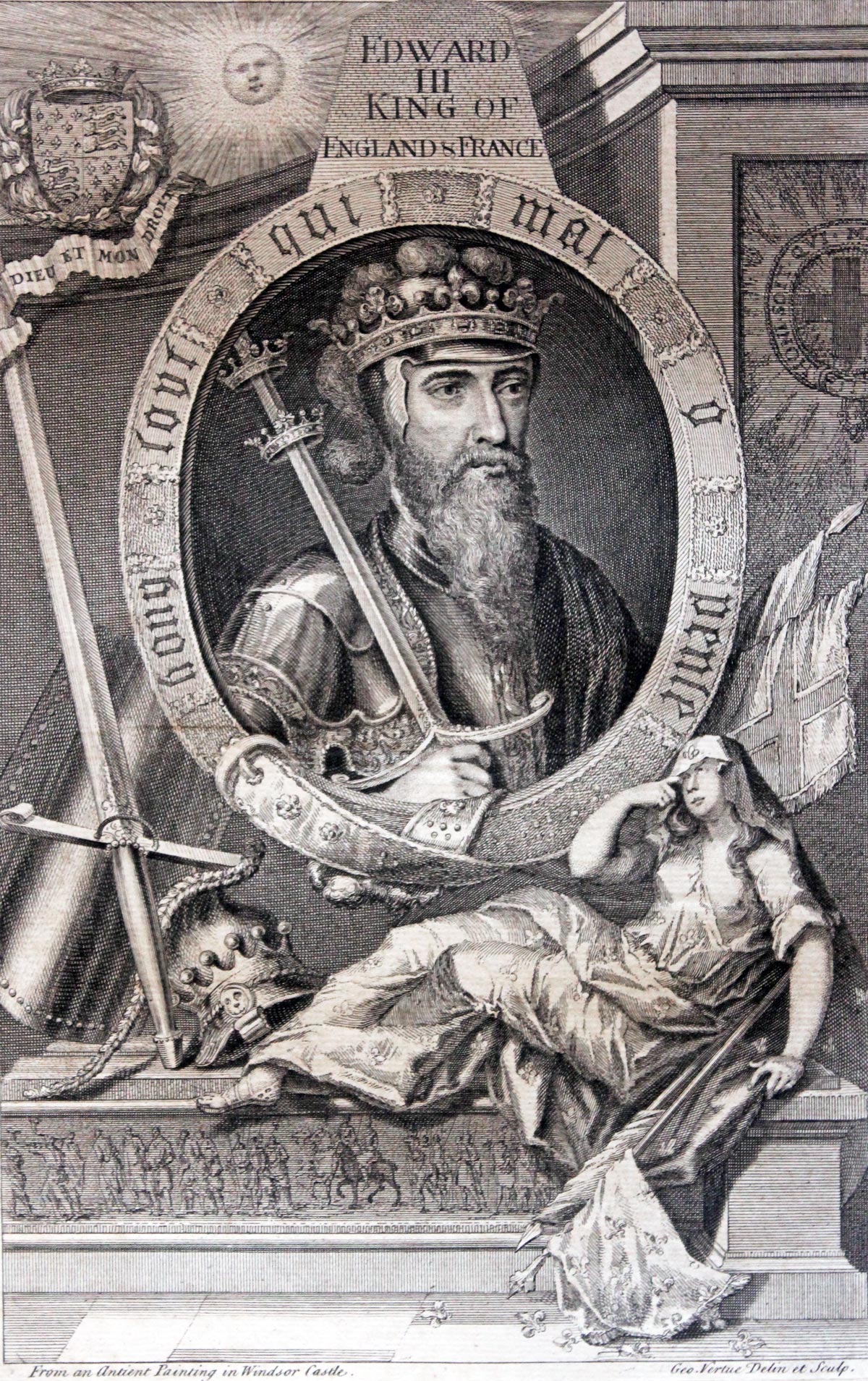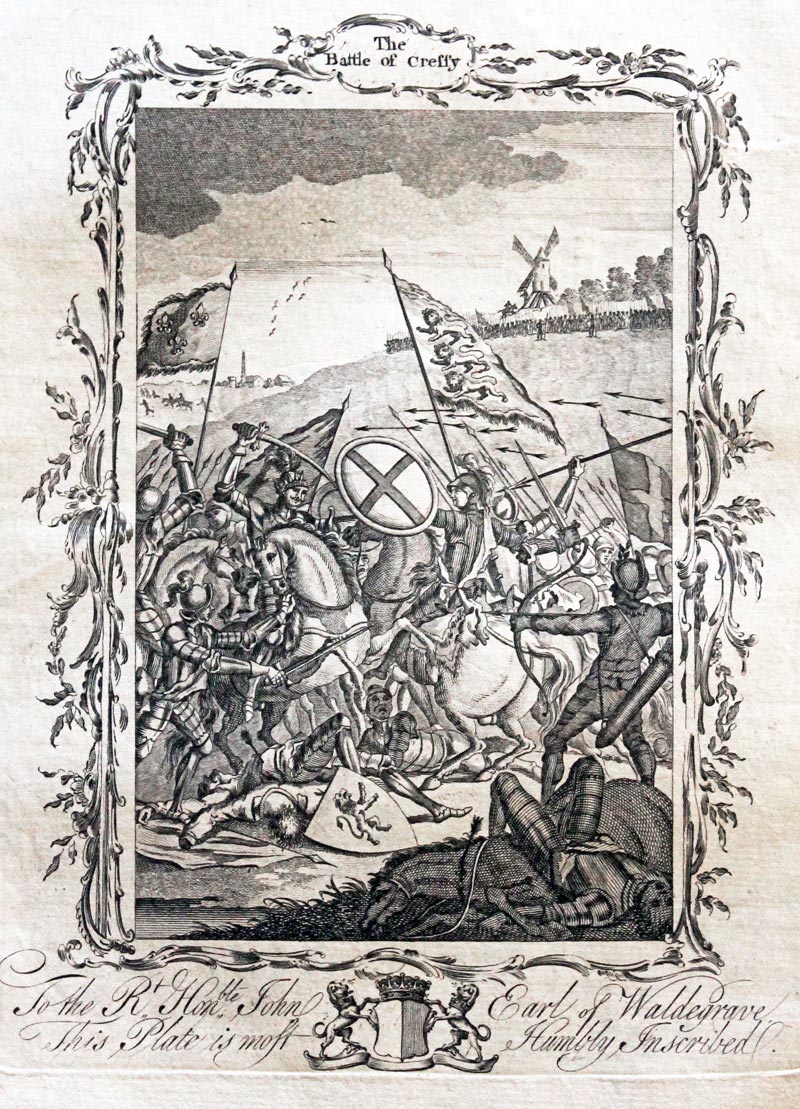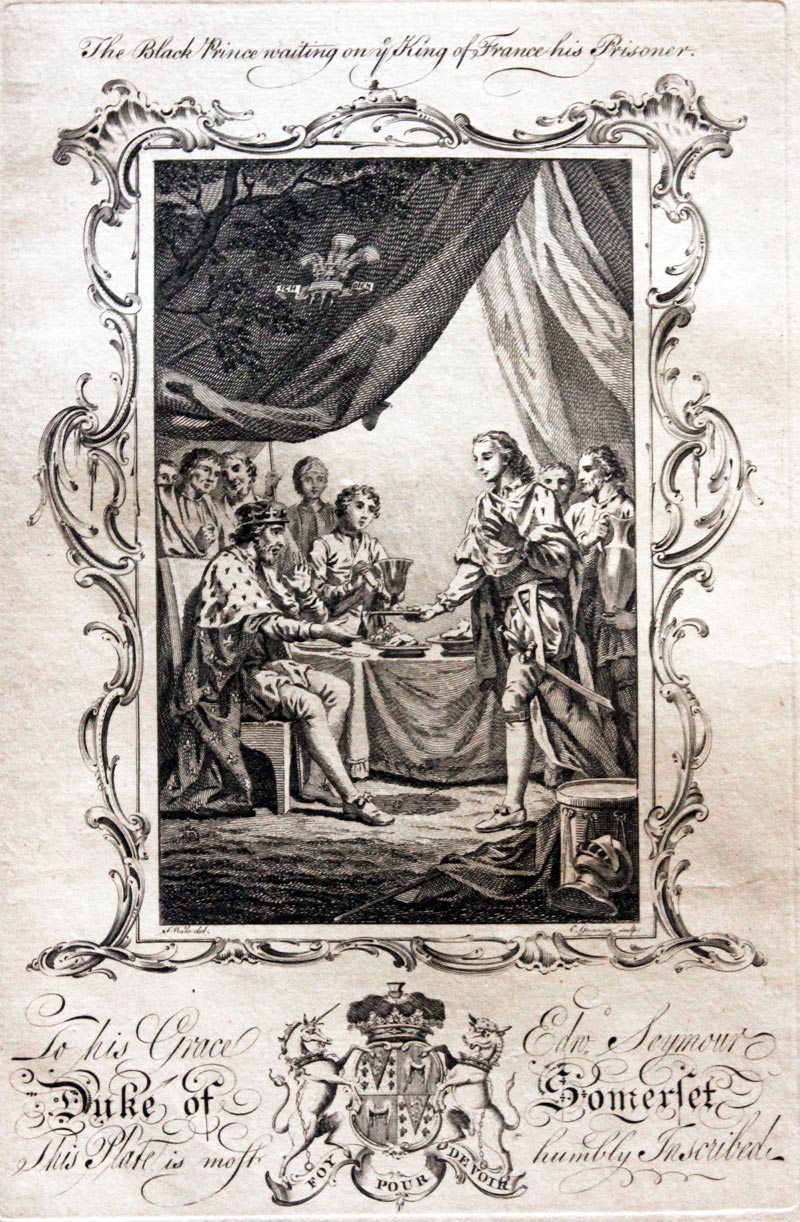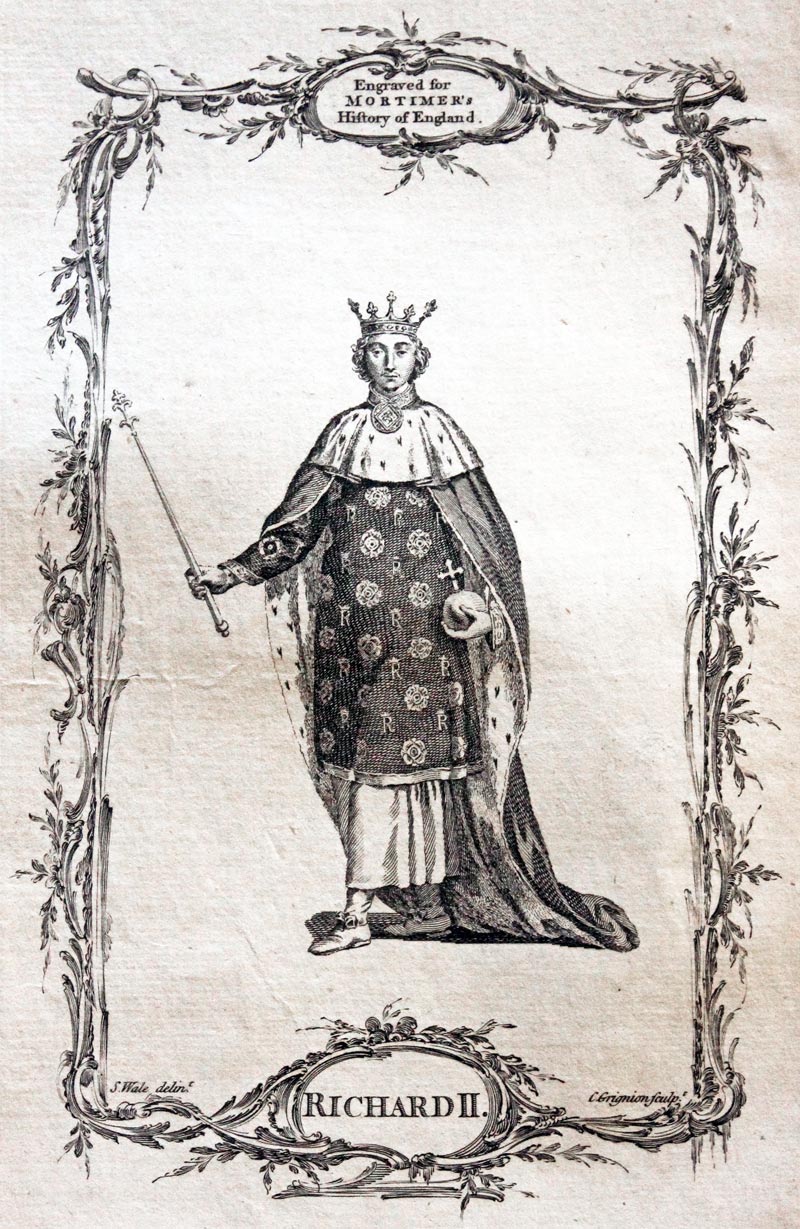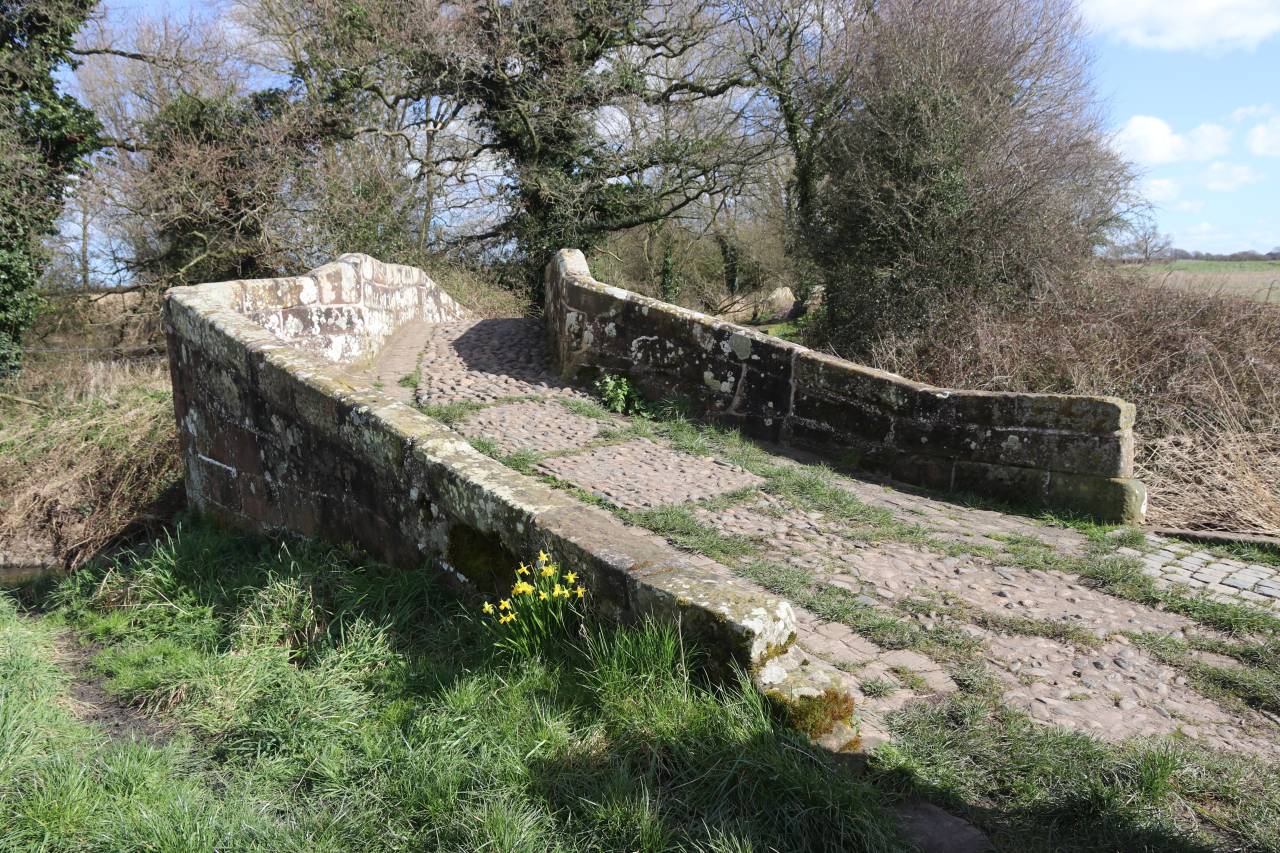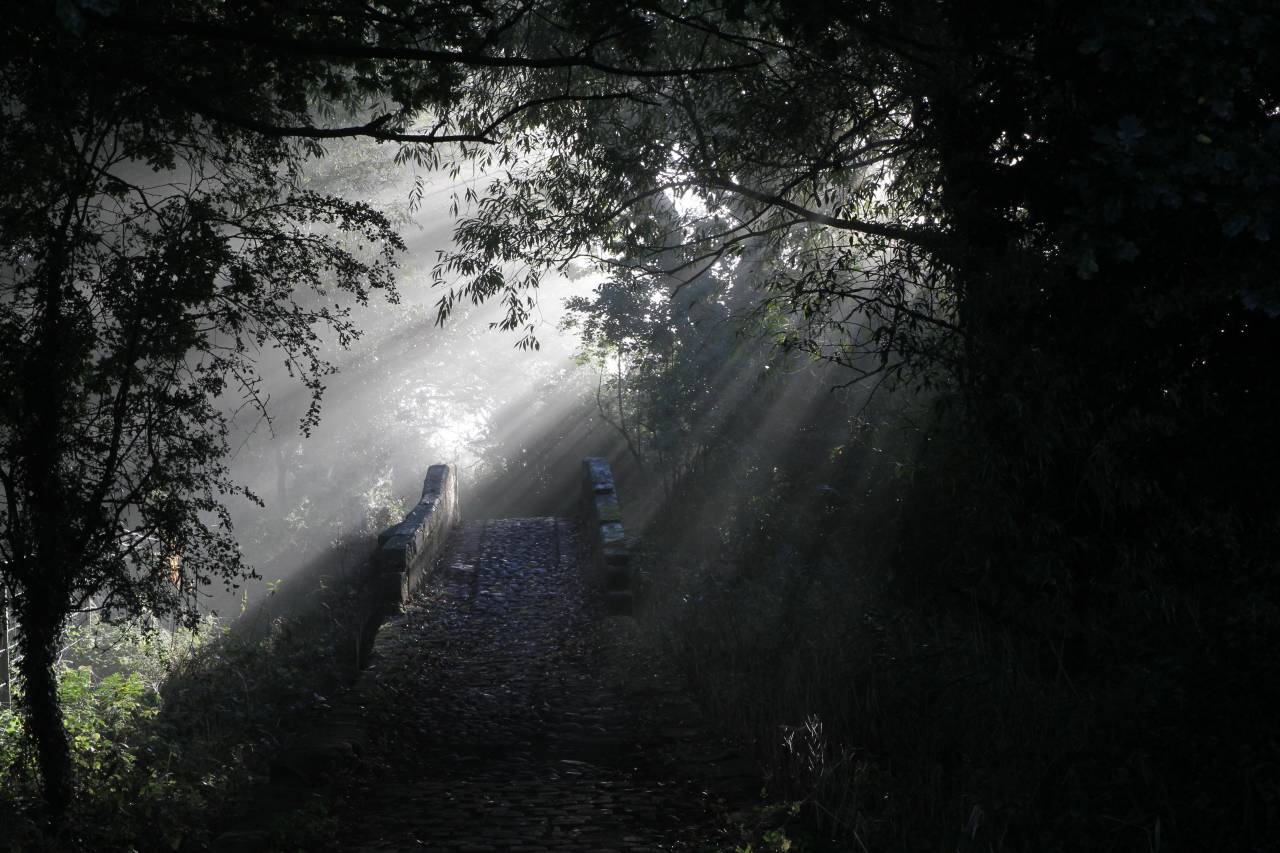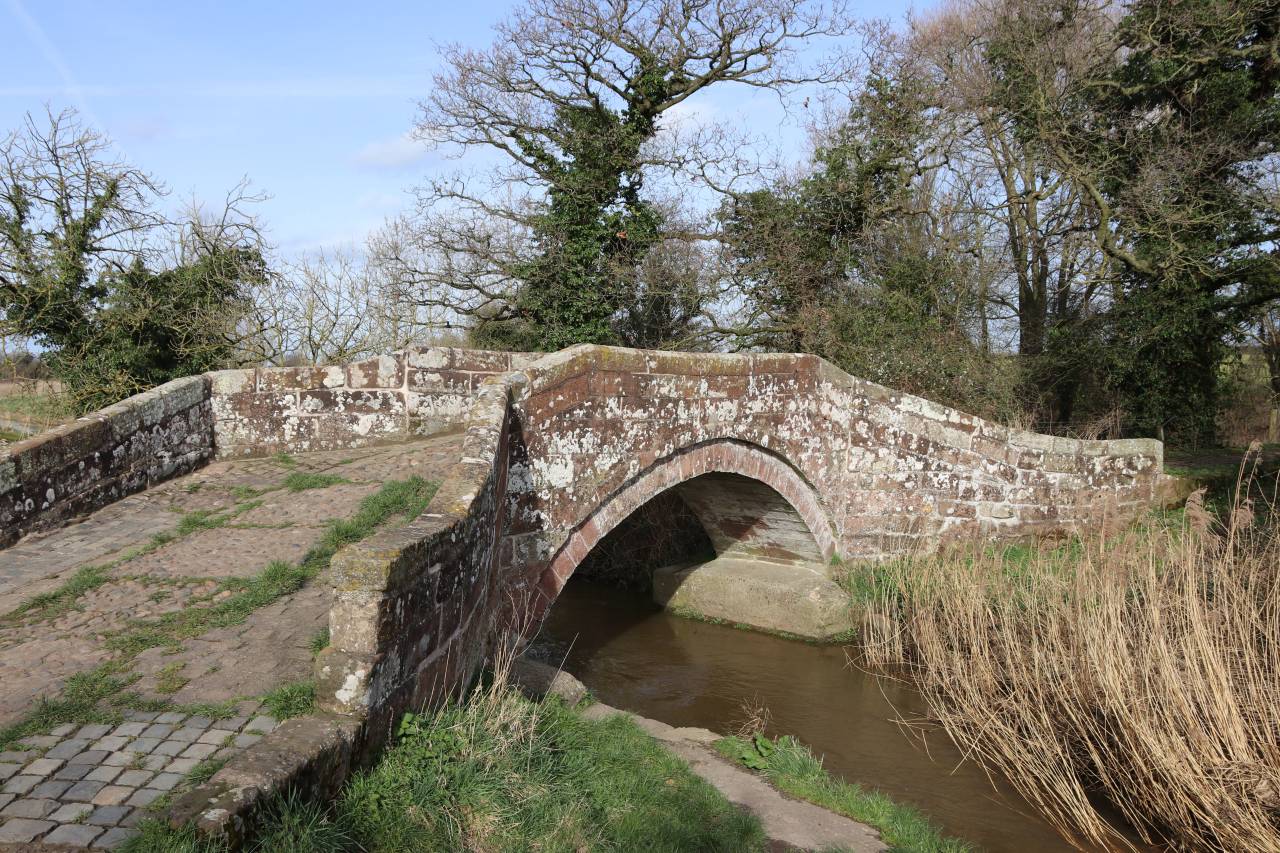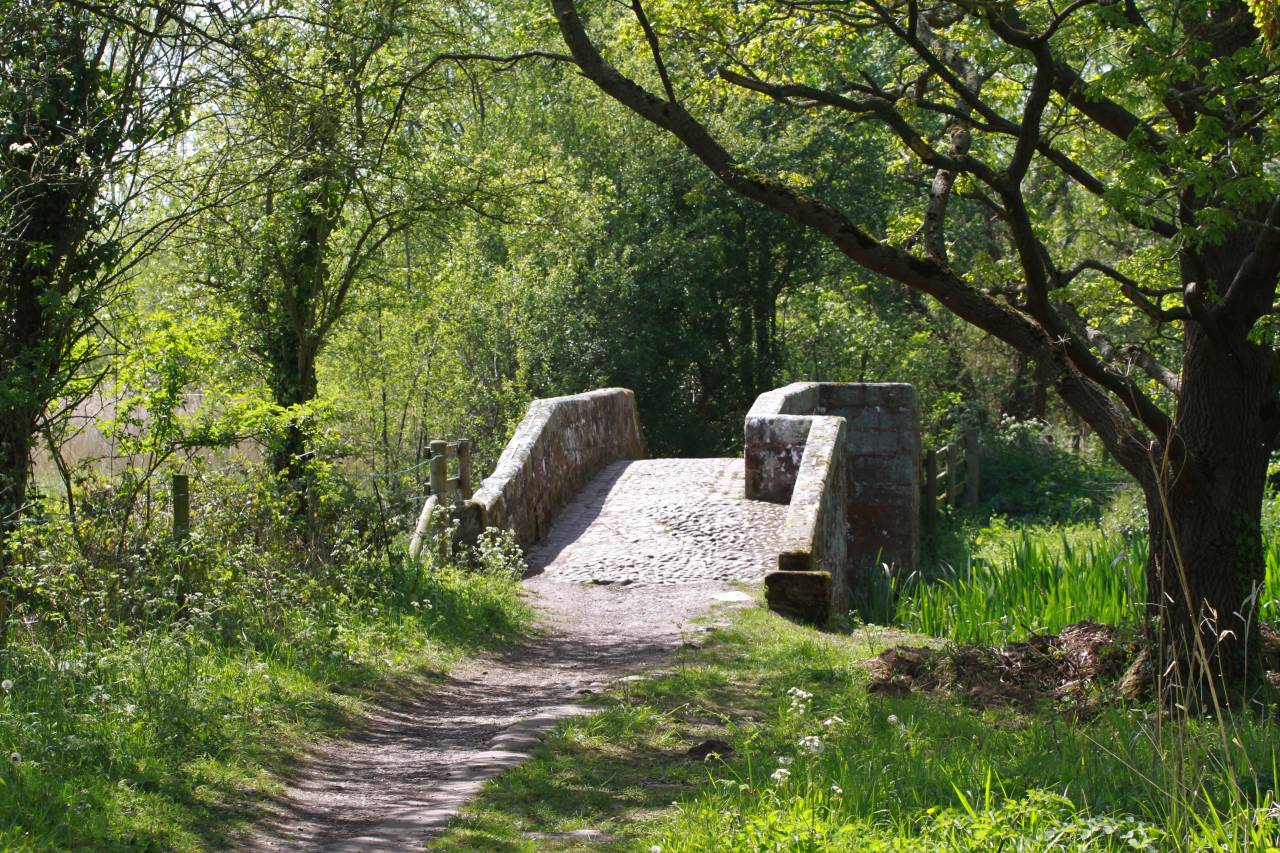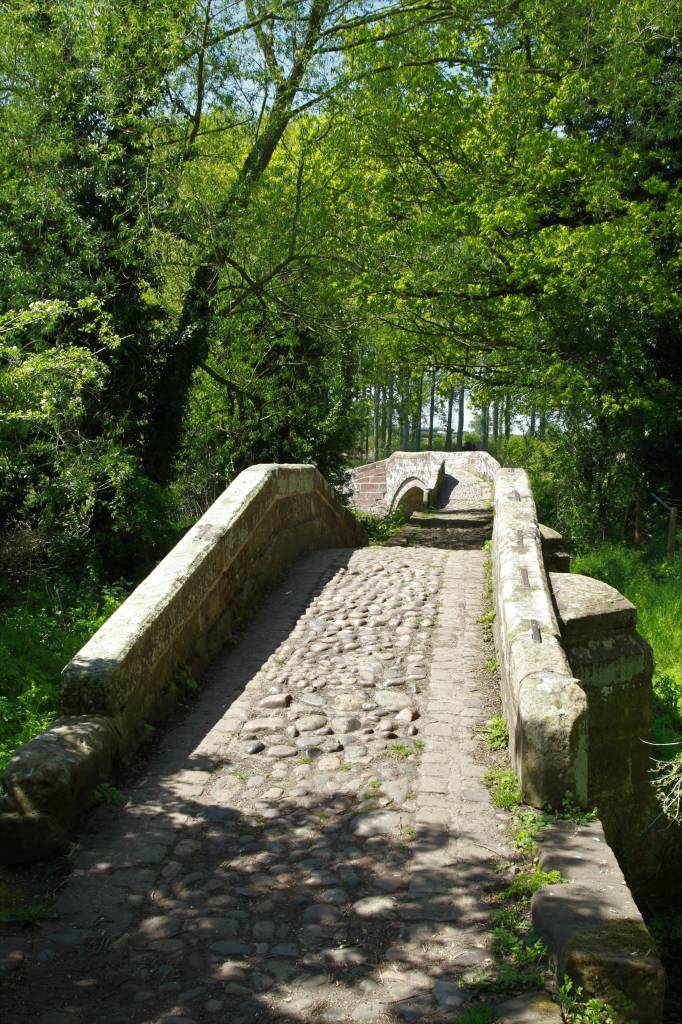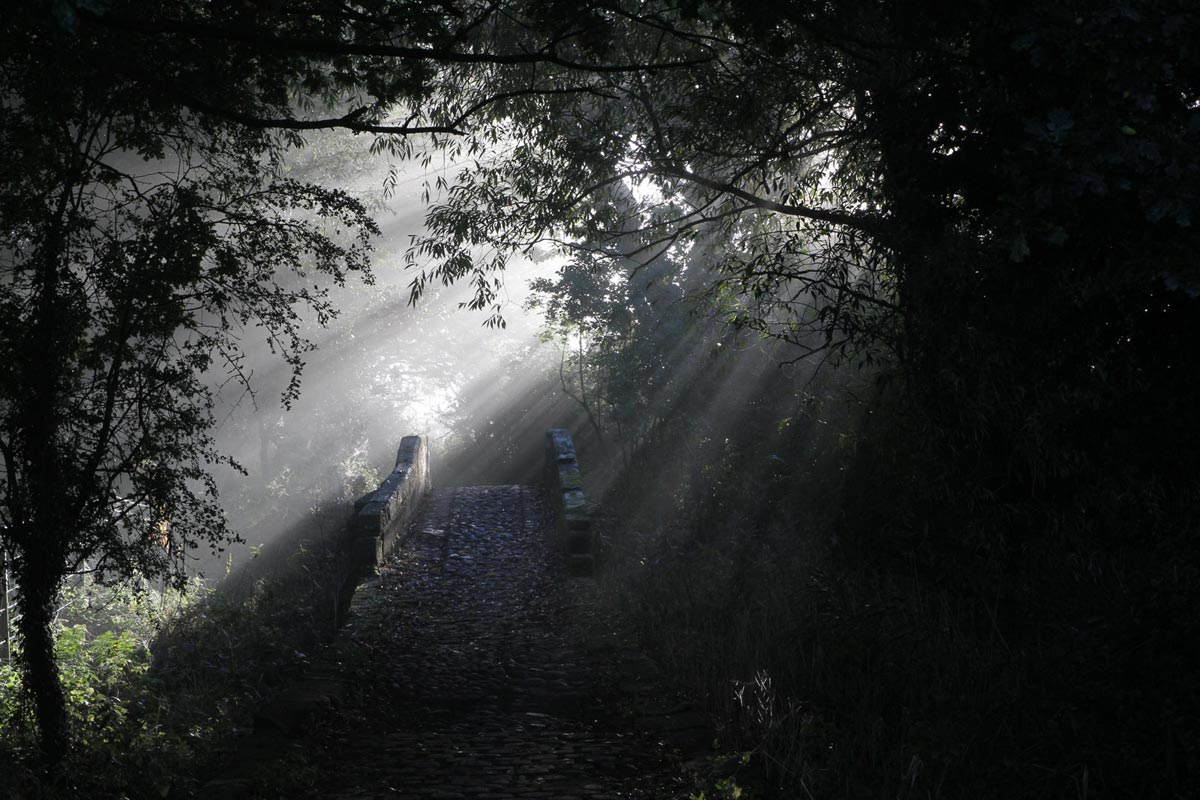
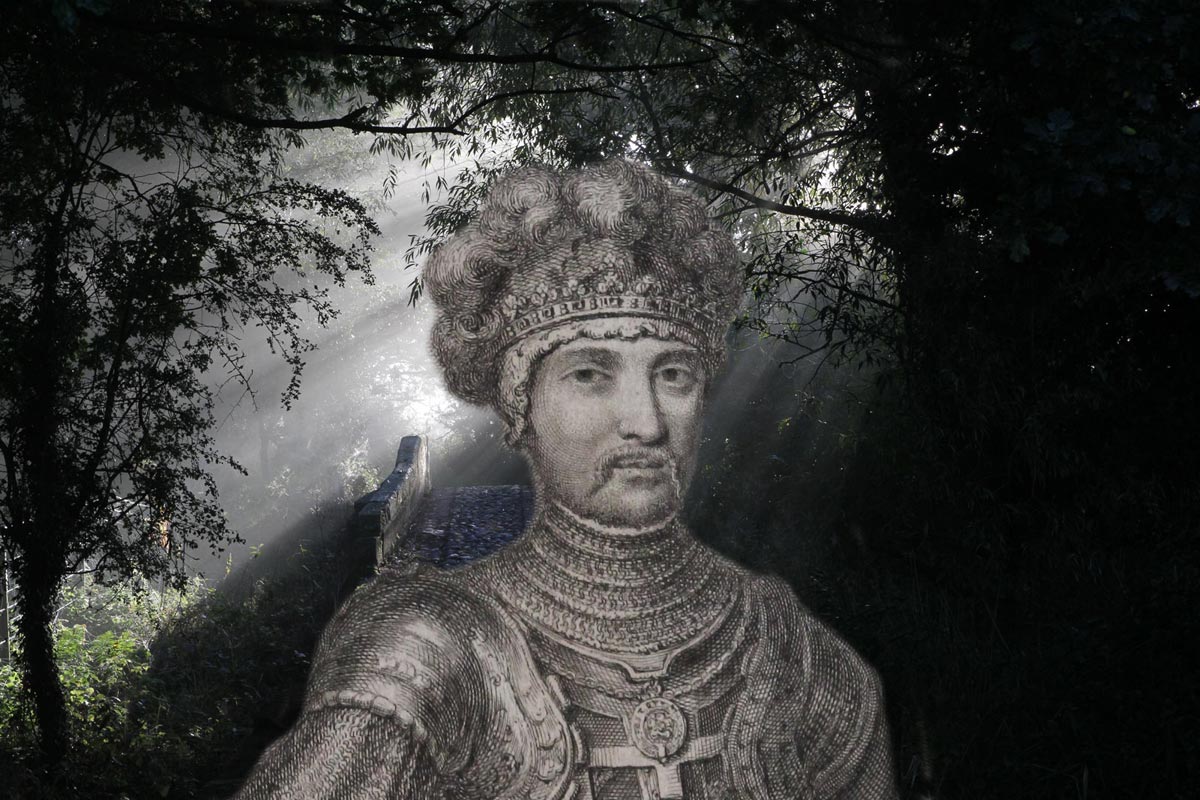
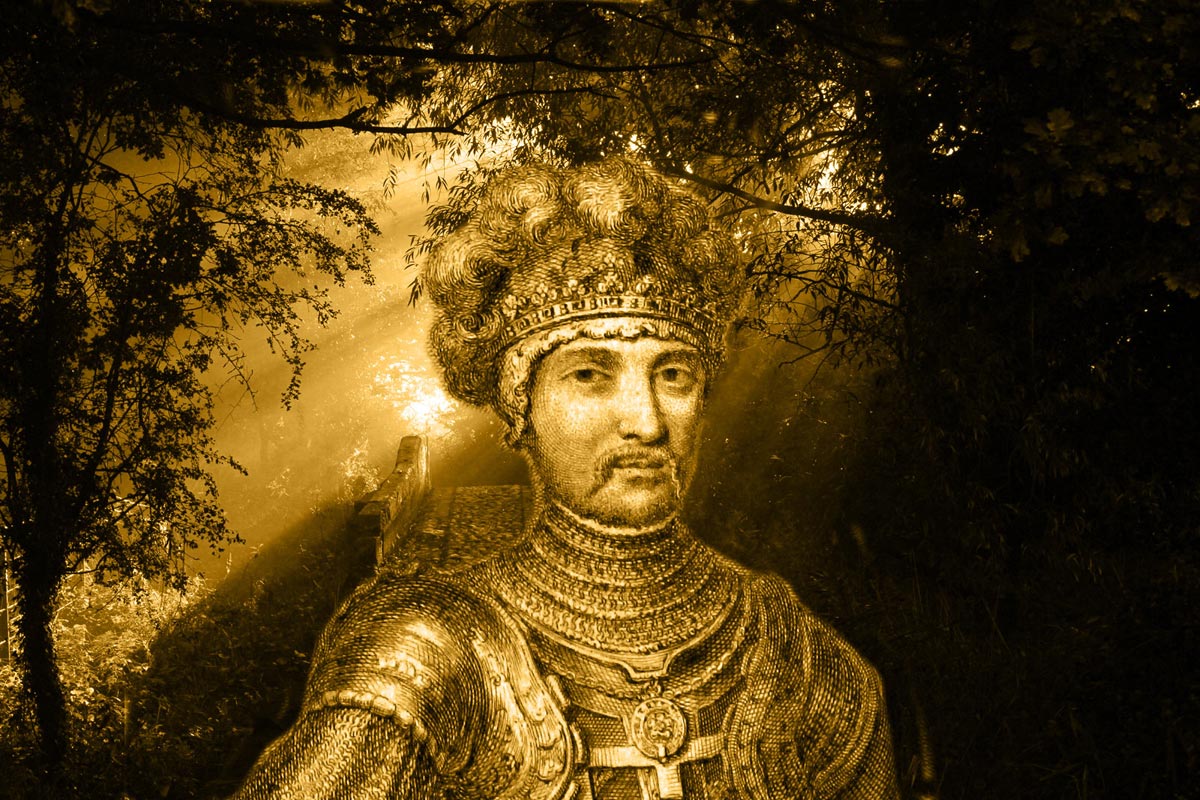
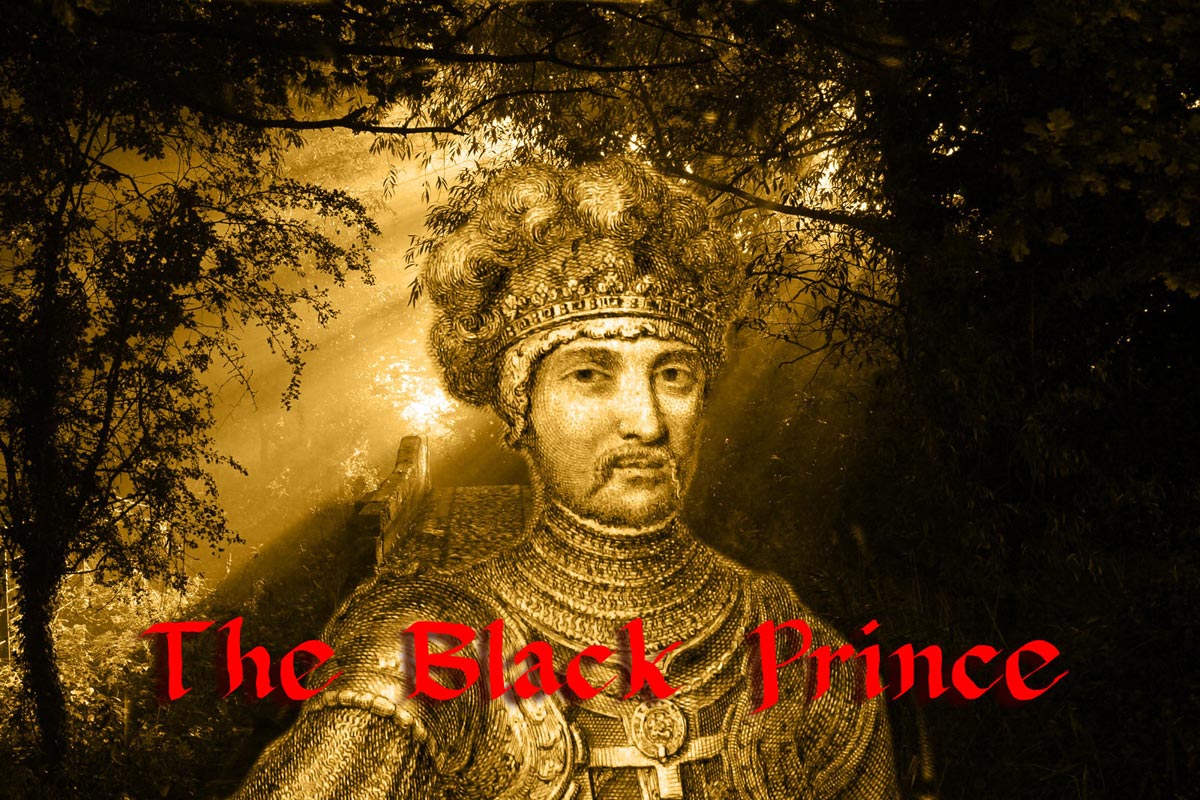
Whilst on a family holiday in Kent in August, we had the opportunity to visit Canterbury Cathedral and I was able to photograph the tomb of Edward, The Black Prince. Edward had always been someone I have wanted to study as I first came across his name in the 1970's when I read that he had maintained the bridges at Hockenhull.
His register records that in 1355 he paid "a grant of 20 shillings for the repair of the bridge of Hokenhull"
-
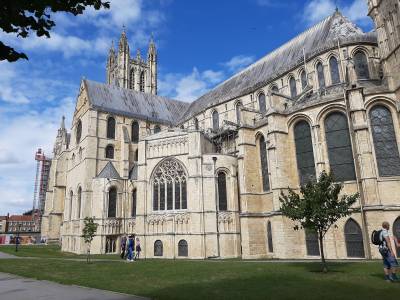
Canterbury Cathdral
-
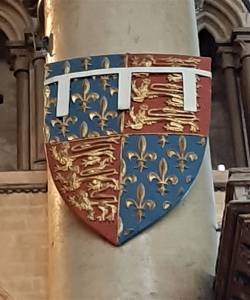
Insignia of the Black Prince
-
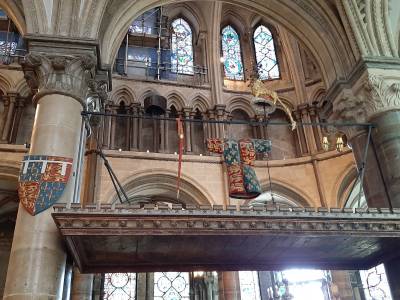
The Prince's Achiements
-
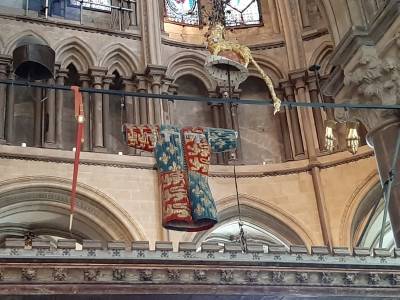
The original Christleton Institute building on the right
-
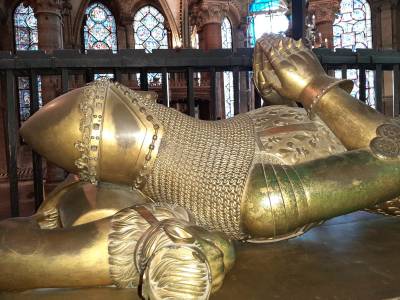
The Black Prince
-
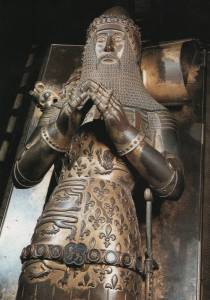
The Black Prince's Tomb
-
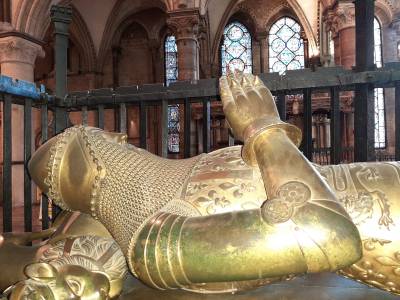
Tomb of the Black Prince
It is thought that as Prince of Wales and Earl of Chester he had good reason to keep the roads and bridges in good repair. He visited Cheshire in both 1353 and 1358. In 1353 there were worrying events taking place and one of his bailiffs "Huw Hamson of Northwich was murdered on the prince's service". He was also worried about the lawlessness that was taking place in the County Palatine, as at that time Cheshire had special autonomy from the rest of the UK. It is recorded that he set in motion improvement to the river navigation on the Mersey and the Dee, and granted Cheshire new privileges and enshrined them into a charter of liberties. He arrived in Cheshire with his great council, and on the 15th August there was a magnificent banquet at Chester Castle.
On the 19th August Cheshire offered 5,000 marks - In English pounds (3,333 13s 4d) as a fine payable over four years, which would be paid by all, in accordance with their wealth, in lands, goods and chattels, with the exception of the church, and poor people with an income of less than 20s a year. On 10 September he granted a charter of liberties to the County.
During his visit in summer 1358 substantial fines of 1000 pounds and 2000 pounds respectively were levied on the foresters of Wirral & Delamere. It is also said that by this time he was driven by the demands of his chivalric lifestyle, and he was looking to add to his coffers to fund his army. "Money did not trickle through his fingers so much as to pour through them. Huge banquets, lavish tournaments, a vast retinue of knights and the best clothes and jewellery- in addition to an equally extravagant wife- Joan Countess of Kent placed a great burden on his resources."
Edward was only 13 years old when he was made Prince of Wales, and 3 years later earned his spurs in battle at the Battle of Crecy in France, but it was in September 1356 that he achieved his greatest triumph, at the Battle of Poitiers during the hundred years war. The power of the English army lay in the longbow, and these weapons were extremely effective against mass infantry and cavalry. At Poitiers he led an army composed mainly of English and Welsh troops, 2000 longbowmen, 3,000 men at arms and 1,000 Gascon infantry. The French army had superior numbers 8,000 men at arms and 3,000 common infantry including 300 German Knights, but it was the power of the English archers pouring down arrows on the massed French infantry which won the day. As the Dauphin's division reached the English line, exhausted after a long march in heavy armour, and continually harassed by hail after hail of arrows, their attack was repulsed after only two hours. As they retreated there was further confusion in the French ranks and they were confronted by Edward with his men at arms and Knights mounted for a charge. At the same moment another line of attack was launched by a mobile reserve of mounted English troops, and in the chaos that ensued, the French army disintegrated, with many soldiers fleeing the battlefield. He sealed his victory by securing the greatest prize of all, capturing King John II of France.
We learn that in 1367 Edward led his army into Spain, and again the longbowmen were to succeed in the Battle of Najera. This added to his great reputation as a Military leader, but dysentery and malaria broke out amongst the English troops and the Prince himself was struck down. By 1369 he was again in dispute with Charles V of France over the matter of taxes in the region of Aquitaine, but Charles knew that the Prince was desperately ill and seemed to have challenged his authority at Limoges. The action that followed resulted in a siege of the City, and the English force was led by the three sons of Edward III, Edward, Prince of Wales, John of Gaunt, the Duke of Lancaster, and Edmund of Langley, Earl of Cambridge. Reports of the siege are disputed, but from the many accounts we learn that Edward was exhausted and embittered and carried to the city in a litter. When his men stormed the defences and took the city, many defending troops and civilians including women and children were put to the sword, and there were pitiful scenes. It is reported that the evidence points to widespread destruction of property and between 200-400 people and from the garrison, captured or killed. It was a sad end to a glorious military career. He sailed for home in January 1371, and died at the age of 46 on 8th June 1376.
The Black Prince had from childhood, a special affection for Canterbury Cathedral, and had given generously to it through his lifetime. He even had a chantry chapel built in the crypt for his burial place, but he was eventually laid to rest in a magnificent tomb within the Trinity Chapel immediately south of Thomas a Becket's shrine. The life size effigy of the Black Prince fully armed is made of copper, and in a tradition of such tombs, his head rests on his helmet with a little dog at his feet. The marble tomb is surrounded by twelve enamelled shields, engraved with his arms for war and peace, with the two mottoes, Houmont and Ich diene. Replicas of the prince's achievements - surcoat, shield, helm, gauntlets and scabbard hang above his tomb, which is covered by a painted wooden canopy, with a throne of Mercy Trinity, surrounded by the four evangelists.
-
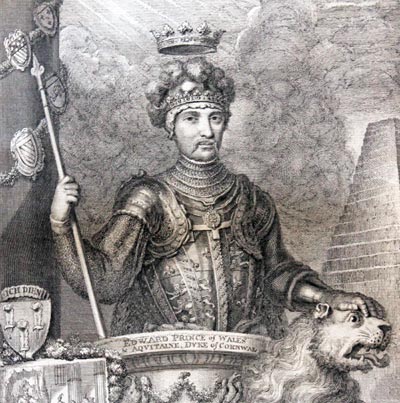
Copper engraving ot the Black Prince published circa 1765
-
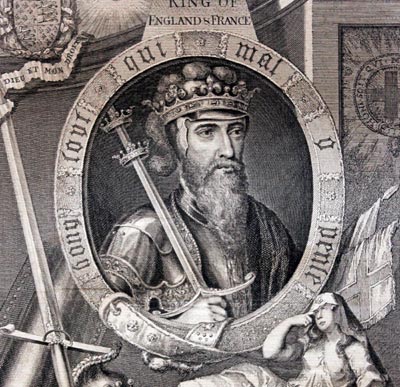
18th century copper engravings of Edward III the father of the Black Prince
-
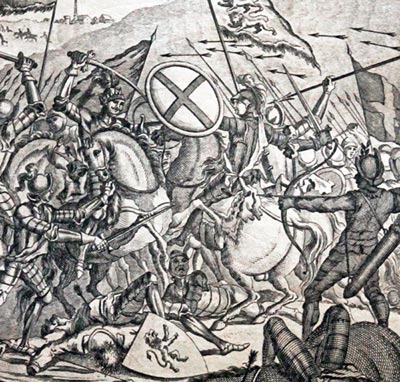
18th century copper engravings of the Battle of Crecy, July 12th 1346
-
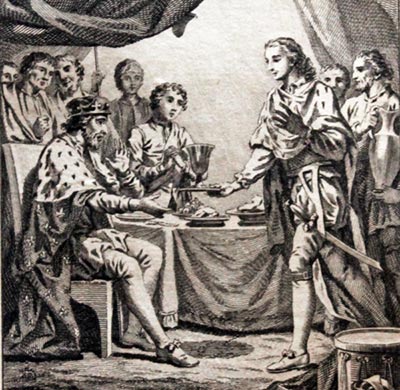
18th century copper engravings of the Black Prince waiting on the King John of France, his prisioner
-
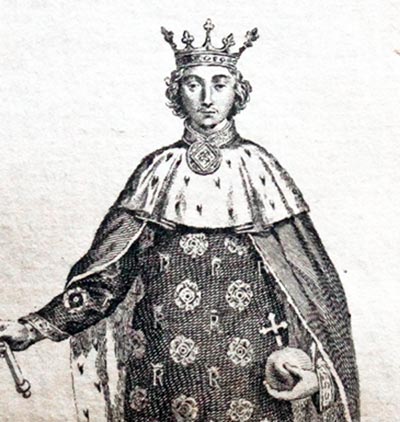
18th century copper engravings of King Richard III, the son of the Black Prince
References:
- Christleton 2000 years of History
- Canterbury Cathedral Guidebook Keates & Hornak Pub. Canterbury Cathedral.
- The Black Prince, Pub. Canterbury Cathedral Enterprises
- The Black Prince Michael Jones Pub. Head Zeus
- Wikipedia - The Black Prince; Accounts of Battles.
The Bridges at Hockenhull
-
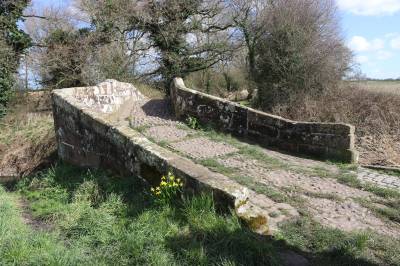
Hockenhull Middle Bridge
-
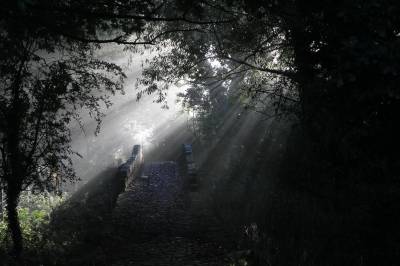
The Bridges at Hockenhill
-
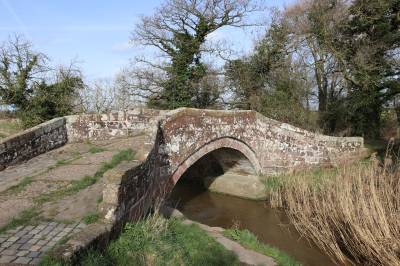
The Middle Bridge Hockenhull
-
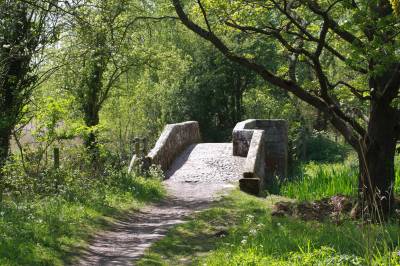
The west bridge at Hockenhull
-
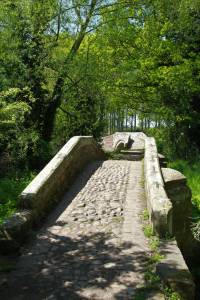
The east bridge and causeway
